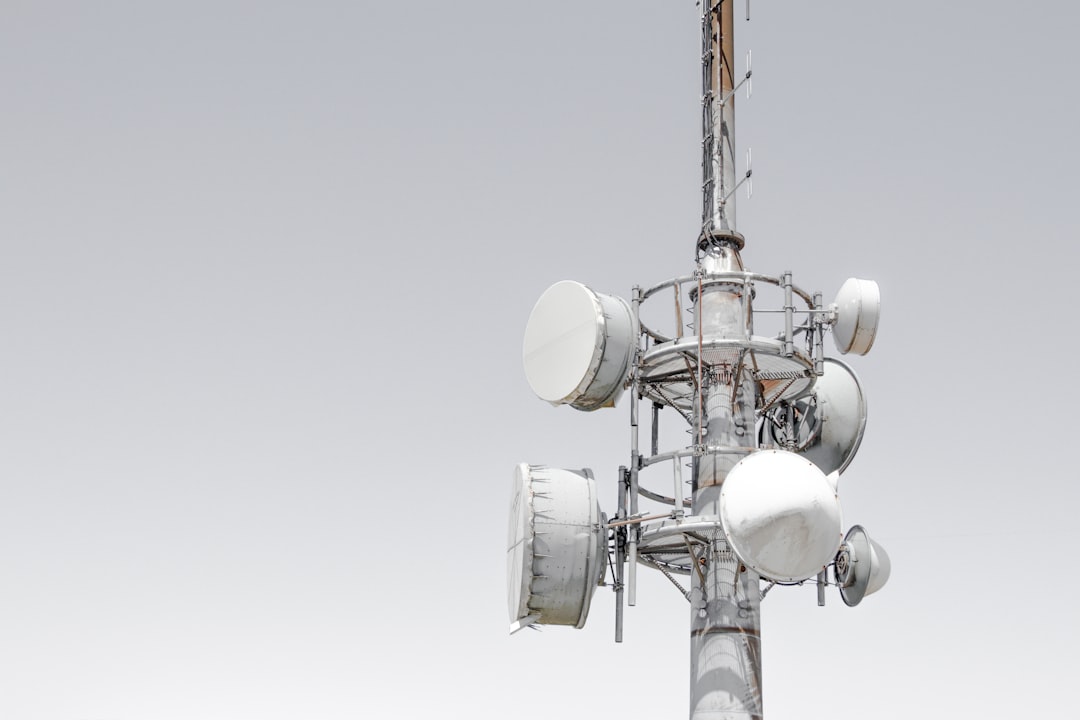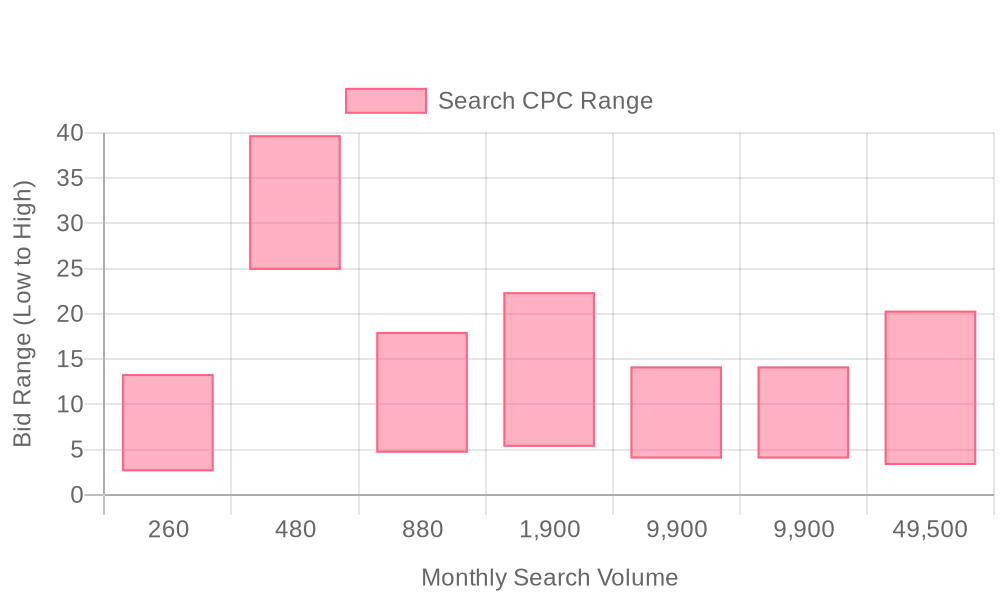
Supercharge your lead generation with a FREE Google Ads audit - no strings attached! See how you can generate more and higher quality leads
Get My Free Google Ads AuditFree consultation

No commitment
Supercharge your lead generation with a FREE LinkedIn Ads audit - no strings attached! See how you can generate more and higher quality leads
Get My Free Google Ads AuditFree consultation

No commitment
Supercharge your lead generation with a FREE Meta Ads audit - no strings attached! See how you can generate more and higher quality leads
Get My Free Google Ads AuditGet My Free LinkedIn Ads AuditGet My Free Meta Ads AuditFree consultation

No commitment
Supercharge your lead generation with a FREE Google Ads audit - no strings attached! See how you can generate more and higher quality leads
Get My Free Google Ads AuditFree consultation

No commitment
In the competitive realm of telecom advertising, Google Ads emerges as a dynamic tool to bridge the gap between digital engagement and offline customer acquisition. Telecommunications businesses often face challenges such as missing high-value prospects and lacking visibility into anonymous traffic, which can lead to lost opportunities. By leveraging Google Ads effectively, companies can intercept decision-makers precisely when they're in need, addressing these challenges using targeted strategies tailored to this complex industry.

Telecommunications companies operate in a fiercely competitive market where digital acquisition costs are high and buyer journeys are complex. Maximizing lead generation requires targeted, data-driven campaigns that adapt to changing audience behaviors and align with precise business objectives.
Modern telecom marketers now have access to advanced tools that move beyond basic demographic targeting, allowing for segmentation by company size, industry, and real-time purchase intent. Using Google Ads for telecommunications, businesses can prioritize high-value accounts, personalize messaging, and continually optimize spend to attract qualified leads while maintaining strict cost control.
Start by researching high-intent, telecom-specific keywords that align with your service offerings and target markets. Include search phrases like "managed network services for enterprises" or "fiber optic installation for hospitals." Remove irrelevant keywords using negative targeting to focus budget on buyers most likely to convert.
Craft ad copy that addresses the unique pain points of telecom buyers, such as downtime, compliance, or scalability. Highlight differentiators like 24/7 support, proven reliability, or industry certifications. B2B Ads Examples showcase effective messaging strategies to inspire your own copywriting.
Design landing pages that load quickly, communicate value propositions, and include concise forms tailored to B2B buyers. Incorporate trust signals such as case studies, partner logos, and compliance badges. Seamless integration with CRM systems allows for instant qualification and routing of new leads to sales teams.
Implement advanced conversion tracking to capture phone calls, form submissions, and offline meetings. Conversion tracking provides accurate, real-time feedback on campaign performance. Marketers can then adjust bids, pause underperforming ads, and reallocate budget to channels delivering measurable telecom lead generation.
Connect enriched lead and account lists from your CRM directly into Google Ads for precise audience targeting and suppression. This closed-loop sync ensures sales and marketing operate from a unified data set, enabling more relevant ad experiences and reducing wasted spend on low-potential accounts. As leads convert or move through the funnel, audience segments update automatically, keeping campaigns optimized for telecom customer acquisition. For step-by-step tactics to automate this process, explore our guide on Account Research Automation.
Telecommunications providers operate in a highly competitive digital landscape, where attracting new business hinges on precise audience targeting and rapid response to shifting demand. Google Ads provides telecom marketers with a direct route to high-value prospects who are actively searching for solutions, enabling teams to intercept potential customers at critical moments of consideration.
The ability to capture and engage these prospects is strengthened by advanced ad platforms that translate anonymous website visits into actionable company profiles and prioritized accounts. This approach eliminates wasted spend on low-intent traffic, empowering telecom marketers to maximize every advertising dollar by focusing on buyers who show real in-market intent and are most likely to convert. Tools like Sona Audiences help telecom brands identify and segment high-value audiences for more effective targeting.
With tools that unify and enrich audience data, telecom brands can now sync high-fit leads and customer segments directly into their Google Ads campaigns. For a deeper dive into boosting Google Ads ROI in telecom, see telecom Google Ads benchmarks. This ensures that ad delivery stays aligned with the evolving needs of each prospect as they move through the funnel, enabling revenue teams to deliver timely, personalized messages that accelerate telecom customer acquisition. By bridging online and offline behaviors, marketers gain a full view of conversion paths, allowing for true ROI measurement across all channels.

Telecommunications marketers can no longer rely on generic, catch-all campaigns if they want to drive measurable ROI and outpace competitors. Digital marketing for telecom thrives on campaign structures that reflect the complexity of B2B buyers, high-value contracts, and fast-changing service needs. By tailoring Google Ads campaign types to distinct stages of the telecom sales funnel, brands achieve higher engagement, better lead quality, and more predictable customer acquisition.
Adopting a segmented, data-driven approach to Google Ads for telecommunications enables revenue teams to reach the right buyers with the right message at every stage of their decision journey. This level of campaign sophistication transforms online advertising for telecom from a cost center into a scalable growth engine. To start optimizing your telecom campaigns for measurable outcomes, Sona onboarding can help you see how data-driven segmentation elevates your results.

Telecommunications marketers see measurable growth when they move beyond generic search terms and embrace vertical keyword targeting, competitor analysis, and niche placements. Focusing on high-intent, industry-specific queries like “enterprise fiber installation” or “business VoIP migration” attracts commercial buyers who are actively seeking solutions, not just browsing. Identifying these vertical opportunities requires a systematic approach to keyword research, using tools and intent data to uncover the actual queries that drive revenue—not just clicks. Telecom keyword trends provides a deeper look at this trend.
Many telecom firms overlook growth opportunities by failing to track and import high-value prospects who engage but do not immediately convert. Integrating real-time visitor identification closes this gap by surfacing the companies and decision-makers behind anonymous web traffic. Tools like Sona ID help with recognizing and tracking these valuable visitors, enabling more precise follow-up and nurturing.
Competitor gap analysis further amplifies growth by revealing keywords and placements others are missing. By analyzing which search terms and ad placements competitors neglect, telecom marketers can capture untapped segments and drive efficient customer acquisition. Specialty placements, such as industry-specific forums or tech-focused YouTube channels, deliver messaging directly to engaged audiences. When these tactics are combined with dynamic audience building, marketers can keep their telecom lead generation pipeline fresh, continuously updating segments as prospects move through the decision journey. For more insights on nurturing prospects through each stage, check out our guide on buyer journeys. Real-time synchronization between CRM, ad platforms, and analytics tools ensures that every promising lead is nurtured and attributed accurately—closing the loop between digital marketing for telecom and sales outcomes.

Effective audience segmentation in telecommunications transforms digital marketing for telecom providers by aligning ad targeting with the nuanced needs of various buyer personas. Segmenting audiences by company size, industry vertical, and readiness to purchase enables marketers to serve highly relevant ads that drive higher-quality telecom lead generation and accelerate customer acquisition.
Telecom advertising teams using advanced segmentation can prioritize enterprise accounts looking for managed network services, SMBs seeking scalable VoIP, or IT leaders comparing SLA guarantees. Predictive analytics now allows segmentation by buying stage, so telecom ad campaigns reach decision-makers precisely when they are most engaged. This builds on the strategies outlined in Buying Stage Segmentation, which explains how to tailor campaigns to each phase for more effective outreach.
Modern Google Ads strategies leverage real-time intent data to create dynamic audiences that update automatically as prospects move from research to purchase. Marketers can pinpoint website visitors not just by anonymous traffic but by accurately identifying companies and decision-makers, enabling tailored messaging for each phase of the buyer journey. Platforms like Sona Identification are designed to reveal which organizations are visiting your site, empowering telecom marketers to take action on high-value visitors.
Telecommunications PPC performance is further elevated by integrating advanced conversion tracking that measures online and offline results. Conversion Tracking provides a deeper look at this trend, showing how attribution enhances performance insight and supports campaign optimization. This data-driven feedback loop supports ongoing Google Ads optimization, allowing marketers to continuously refine segments and messaging for greater impact in online advertising for telecom.

| Industry | Keyword | Monthly Search Volume | Competition Level | Low Bid | High Bid |
| Telecommunications | local telephone company | 260 | LOW | 2.61 | 13.35 |
| Telecommunications | business telecom | 480 | LOW | 24.86 | 39.73 |
| Telecommunications | telecom internet | 880 | LOW | 4.66 | 18 |
| Telecommunications | telecom services | 1900 | LOW | 5.31 | 22.39 |
| Telecommunications | telecommunications companies | 9900 | LOW | 4.02 | 14.19 |
| Telecommunications | telecom companies | 9900 | LOW | 4.02 | 14.19 |
| Telecommunications | telecommunications | 49500 | LOW | 3.3 | 20.35 |
Telecommunications companies thrive when their Google Ads strategy targets high-intent buyers at every stage of the decision process. Selecting the right keywords, layering in local and industry-specific modifiers, and regularly refining negative keyword lists drive both lead quality and campaign efficiency in telecom advertising.
Start with granular, commercial-focused terms that attract B2B buyers such as "enterprise VoIP solutions," "business fiber internet provider," and "cloud PBX for healthcare." Incorporate local modifiers to capture regional demand, for example, "5G installation services Chicago" or "telecom network support NYC." This approach ensures your telecom ad campaigns surface for prospects seeking specific solutions in their area, resulting in higher conversion rates and lower wasted spend. One analysis in Telecommunications Keywords explores this further.
Consistent keyword research also reveals emerging demand pockets. By monitoring search trends and integrating CRM insights with campaign data, marketers can identify new service lines or underserved regions. Dynamic audience management platforms help keep search term lists aligned with real-time buyer intent, making it easier to prioritize keywords that reflect current market needs and to rapidly pause underperforming ones. Solutions such as Sona Audiences support the ability to segment and target telecom prospects based on in-market signals.
Offline activities such as sales consultations or contract negotiations often fall outside digital attribution models, leading to incomplete ROI assessment. Advanced conversion tracking tools close this gap by syncing offline conversions—such as phone-based lead qualification or in-person demos—back to the original Google Ads click. For more insights on bridging the online-offline gap, check out our guide on Google Ads ROAS.
Sample telecom lead generation keywords include:
Combining these high-potential terms with intent-based segmentation enables telecom advertisers to target ready-to-buy accounts, streamline demand generation, and optimize spend for maximum ROI. Google Ads Trends provides a deeper look at this trend. Integration with CRM and audience data platforms ensures that keyword targeting evolves with the sales funnel, keeping ad messaging relevant as leads progress toward purchase. This approach positions telecom brands to capitalize on every digital and offline signal, resulting in stronger pipeline and measurable business growth.
A well-structured approach to digital marketing for telecom ensures that every campaign touchpoint aligns with actual buyer needs. This framework is designed for telecom marketers seeking measurable telecom customer acquisition, deeper audience insights, and full-funnel visibility.
Effective telecom ad campaigns begin with precise keyword research tailored to the sector’s commercial and technical nuances. Focus on terms reflecting urgent needs, such as “business VoIP solutions,” “enterprise fiber installation,” and “network repair services.” Negative keywords filter out consumer-focused or irrelevant traffic, reducing wasted spend. Geo-targeted phrases, like “telecom infrastructure provider [city],” help reach high-value local accounts, while compliance-related keywords ensure qualified lead capture.
For maximum relevance, integrate first-party data and historical search queries. When marketers leverage platforms that surface the actual companies visiting their site, they better align new keyword opportunities with real buyer intent. Solutions such as Sona Identification support this by revealing which organizations are actively engaging, making it easier to refine keyword lists and prioritize outreach.
Ads for telecommunications PPC must directly address decision-makers’ pain points. Highlight unique selling propositions such as “guaranteed 99.99% uptime,” “HIPAA-compliant cloud PBX,” or “24/7 enterprise support.” Use clear calls-to-action like “Request a network audit” or “Book a demo,” aligning ad messaging with the specific stage of the buyer journey.
Dynamic ad customization, informed by real-time visitor identification, allows for more precise targeting. For example, if a visitor’s browsing behavior signals interest in network security, serve tailored messaging focused on DDoS protection or compliance certifications. See these Google Ads examples for inspiration on designing high-performing creatives that resonate with telecom buyers.
A seamless post-click experience is critical in telecom lead generation. Landing pages should reinforce key ad promises, use industry-specific language, and present trust signals—such as certifications, case studies, or SLA guarantees—for credibility. Fast load times, mobile responsiveness, and intuitive navigation support conversions, particularly as many telecom buyers research from mobile devices.
Form fields should be concise yet capture valuable qualification data. Streamlining the process with progressive profiling or one-click scheduling tools reduces friction and improves lead quality. When CRM and ad platforms are synchronized, enriched visitor profiles can pre-populate forms and trigger personalized follow-ups, closing the loop between ad engagement and sales activity. For more insights on optimizing conversions, check out our guide on stage segmentation.
Continuous optimization is essential for telecom Google Ads strategies to outperform in a competitive bidding landscape. Regularly review search term reports, adjust bids on high-performing keywords, and refine negative keyword lists to eliminate waste. Use audience segmentation based on firmographics and in-market behaviors to prioritize spend on accounts most likely to convert.
Platforms that unify go-to-market data empower telecom marketers to analyze the full customer journey—from first click to closed deal. By connecting online and offline conversion data, teams can attribute revenue to specific campaigns, adjust budget allocation in real time, and dynamically update remarketing audiences as leads move through the funnel. Learn more in this conversion tracking guide. This holistic approach ensures that every optimization is grounded in actionable insight, driving sustainable improvements in ROI and customer acquisition for telecommunications PPC.

Telecommunications marketers face intense pressure to reach enterprise buyers with tailored messaging and demonstrate measurable ROI on every campaign. Combining advanced Google Ads strategies with integrated cross-channel marketing enables telecom companies to amplify their presence, consistently engage high-value accounts, and accelerate lead generation efforts.
Effective telecom advertising starts by connecting digital signals to real-world outcomes. Marketers who bridge the gap between online behaviors and offline conversions gain a unified view of buying journeys, allowing them to prioritize budget on channels and audiences proven to drive revenue. See benchmarks on Google Ads costs in the telecommunications sector to help make data-driven decisions.
A data-driven Google Ads for telecommunications strategy requires more than standard targeting. By leveraging identification tools, marketers can pinpoint specific companies and decision-makers, moving beyond anonymous web traffic. Platforms like Sona Identification help telecom marketers discover which organizations are engaging and enable outreach to the right contacts at the right time.
Dynamic audience management is essential for telecom lead generation and customer acquisition. As contacts interact with ads, websites, and offline events, audience segments should refresh in real time, ensuring only active, qualified accounts receive retargeting and follow-up messaging. This approach prevents wasted spend and maintains focus on leads most likely to convert.
Advanced conversion tracking unifies digital and offline attribution, giving telecom revenue teams a clear picture of which campaigns deliver true business impact. For more insights on optimizing attribution and refining your telecom marketing, check out our guide on Boosting Google Ads ROAS. This seamless integration transforms fragmented data into actionable insights, powering smarter telecom ad campaigns and driving growth in competitive markets.
Mastering Google Ads for the telecommunications industry isn’t just about running campaigns—it’s about strategically connecting with high-intent customers in a competitive digital landscape.
Throughout this guide, we’ve explored the unique challenges telecom marketers face, from standing out in a saturated market to leveraging precise targeting and ad formats that drive conversions. By focusing on keyword optimization, audience segmentation, and performance tracking, you can turn your ad spend into measurable growth.
Imagine a future where your campaigns consistently attract qualified leads, reduce wasted ad spend, and scale your revenue effortlessly. With the right tools and strategies, this isn’t just possible—it’s within your reach.
Ready to put these insights into action? Start a free trial to experience Sona's platform and its capabilities.
Best practices include targeting high-intent keywords specific to telecom services, segmenting audiences by firmographics and real-time intent, and utilizing various campaign types like search, display, and remarketing to reach different stages of the sales funnel.
To create effective Google Ads, start with targeted keyword lists, craft message-driven ad copy, optimize landing pages for conversions, and integrate real-time conversion tracking to adjust campaigns based on performance data.
The budget should align with your business objectives and the competitive nature of the telecom market, focusing on high-intent keywords and prioritizing high-value accounts to ensure cost control while maximizing lead generation.
Target high-intent, commercial-focused keywords like 'enterprise VoIP solutions' or 'managed network services,' and incorporate local modifiers to capture regional demand, ensuring alignment with your service offerings and target markets.
Success can be measured by implementing advanced conversion tracking for both online and offline interactions, analyzing search term reports, and attributing revenue to specific campaigns, ensuring a comprehensive view of ROI and customer acquisition.
Join results-focused teams combining Sona Platform automation with advanced Google Ads strategies to scale lead generation

Connect your existing CRM

Free Account Enrichment

No setup fees
No commitment required

Free consultation

Get a custom Google Ads roadmap for your business
Join results-focused teams combining Sona Platform automation with advanced Meta Ads strategies to scale lead generation

Connect your existing CRM

Free Account Enrichment

No setup fees
No commitment required

Free consultation

Get a custom Google Ads roadmap for your business
Join results-focused teams combining Sona Platform automation with advanced LinkedIn Ads strategies to scale lead generation

Connect your existing CRM

Free Account Enrichment

No setup fees
No commitment required

Free consultation

Get a custom Google Ads roadmap for your business
Join results-focused teams using Sona Platform automation to activate unified sales and marketing data, maximize ROI on marketing investments, and drive measurable growth

Connect your existing CRM

Free Account Enrichment

No setup fees
No commitment required

Free consultation

Get a custom Google Ads roadmap for your business
Over 500+ auto detailing businesses trust our platform to grow their revenue
Join results-focused teams using Sona Platform automation to activate unified sales and marketing data, maximize ROI on marketing investments, and drive measurable growth

Connect your existing CRM

Free Account Enrichment

No setup fees
No commitment required

Free consultation

Get a custom Google Ads roadmap for your business
Over 500+ auto detailing businesses trust our platform to grow their revenue
Join results-focused teams using Sona Platform automation to activate unified sales and marketing data, maximize ROI on marketing investments, and drive measurable growth

Connect your existing CRM

Free Account Enrichment

No setup fees
No commitment required

Free consultation

Get a custom Google Ads roadmap for your business
Over 500+ auto detailing businesses trust our platform to grow their revenue
Our team of experts can implement your Google Ads campaigns, then show you how Sona helps you manage exceptional campaign performance and sales.
Schedule your FREE 15-minute strategy sessionOur team of experts can implement your Meta Ads campaigns, then show you how Sona helps you manage exceptional campaign performance and sales.
Schedule your FREE 15-minute strategy sessionOur team of experts can implement your LinkedIn Ads campaigns, then show you how Sona helps you manage exceptional campaign performance and sales.
Schedule your FREE 15-minute strategy sessionOur team of experts can help improve your demand generation strategy, and can show you how advanced attribution and data activation can help you realize more opportunities and improve sales performance.
Schedule your FREE 30-minute strategy sessionOur team of experts can help improve your demand generation strategy, and can show you how advanced attribution and data activation can help you realize more opportunities and improve sales performance.
Schedule your FREE 30-minute strategy sessionOur team of experts can help improve your demand generation strategy, and can show you how advanced attribution and data activation can help you realize more opportunities and improve sales performance.
Schedule your FREE 30-minute strategy sessionOur team of experts can help improve your demand generation strategy, and can show you how advanced attribution and data activation can help you realize more opportunities and improve sales performance.
Schedule your FREE 30-minute strategy session





Launch campaigns that generate qualified leads in 30 days or less.
